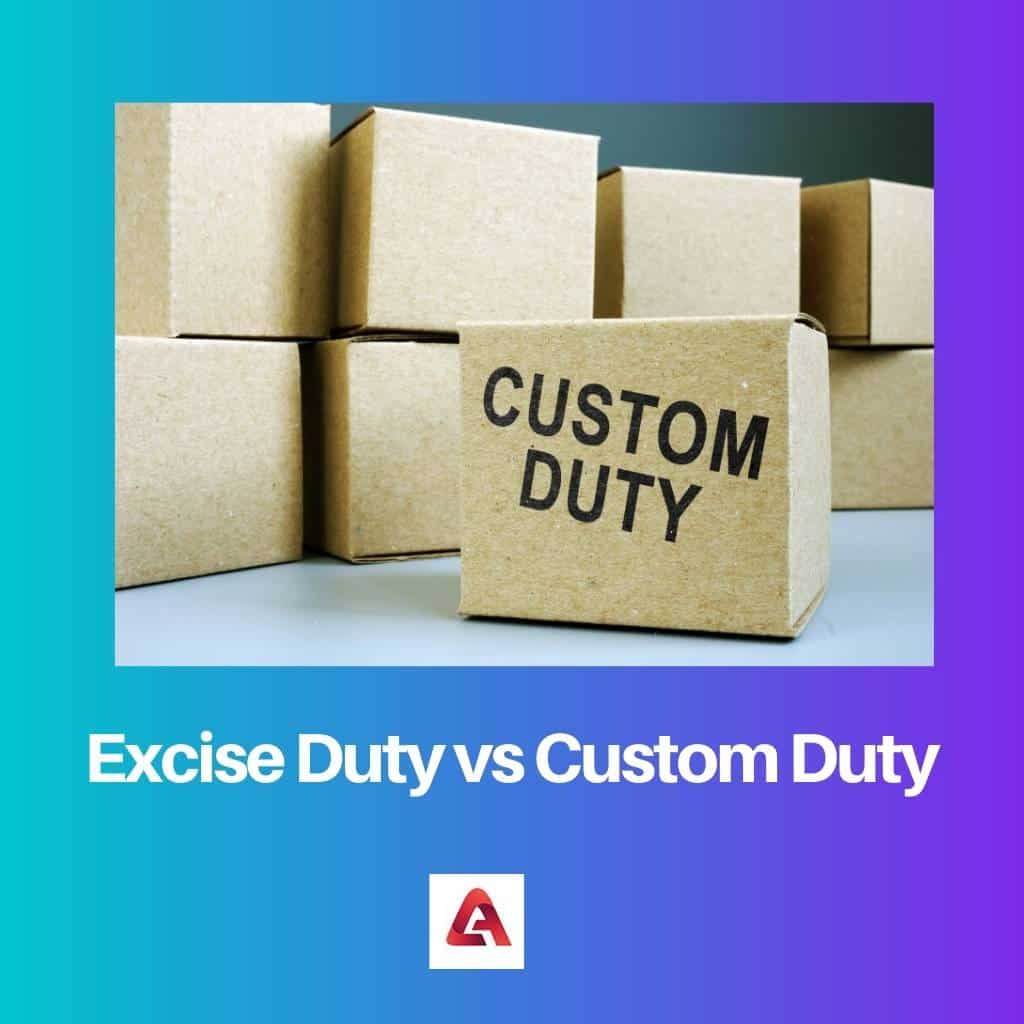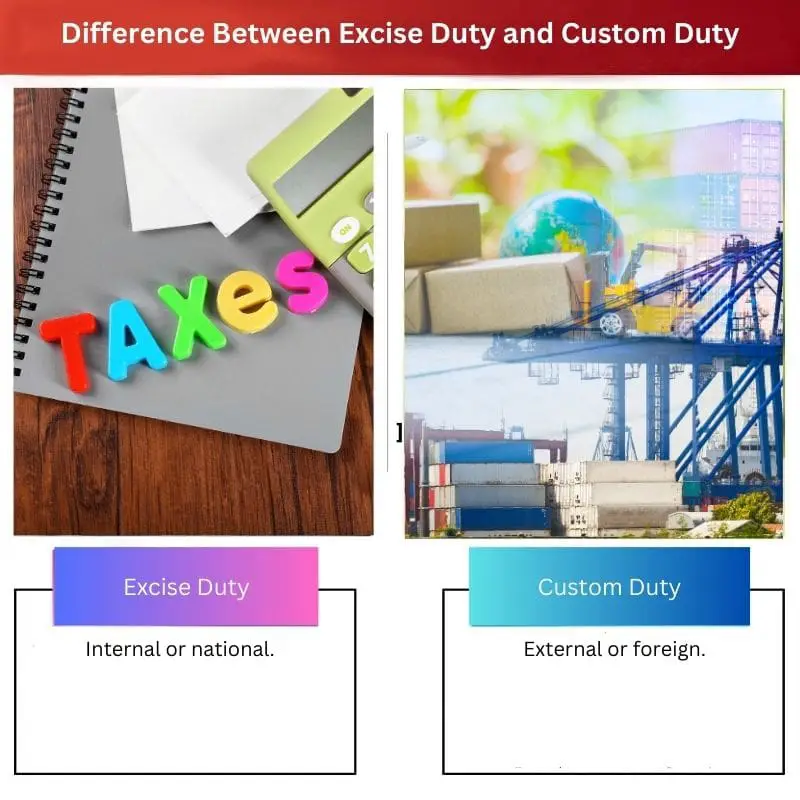The government imposes duties on numerous items and services citizens purchase. This way of levying duties is a type of revenue collection that is extremely beneficial to the country’s development and social programmes.
The collection of duties and taxes is one of the government’s most important revenue sources. This procedure is critical for the smooth operation of the state.
Duty, on the other hand, is an indirect tax, not a direct tax. These taxes are imposed on all items that exist and circulate within a country’s borders.
Furthermore, these indirect taxes are imposed only on manufactured or imported items, not on individual residents. Every country has its own set of rules and regulations for levying customs and excise taxes. The duties that are collected vary from one country to the next.
Key Takeaways
- Excise duty is a tax on the production or sale of goods within a country, while custom duty is a tax on goods imported from another country.
- Excise duty is charged as a percentage of the value of the goods, while custom duty can be charged based on the value, quantity, or weight of the imported goods.
- The government levies excise duty to raise revenue, while custom duty is used to protect domestic industries or to regulate trade.
Excise Duty vs Custom Duty
Excise duty is a tax charged on goods produced inland levied at the time of manufacture for their production, licensing and sale. It is paid by the manufacturer. Custom duty is a tax levied on imports and exports of goods at international borders. It is paid by the importer.

Excise duties are internal or national in characteristic. Excise duty is imposed on items manufactured within a state or nation’s borders. The volume, numerical value, and quantity of commodities are frequently used to determine excise duty. Manufacturers pay excise duty, which is a sort of tax.
Custom duties are external or foreign in characteristic. Imported commodities from other nations or foreign territories are subject to customs duty.
The assessable value of the products and goods is used to determine customs duty. Customs duty is a sort of tax levied on companies, firms, organisations, and individuals who purchase goods and services from importers.
Comparison Table
| Parameters of Comparison | Excise Duty | Custom Duty |
|---|---|---|
| Characteristic | Internal or national. | External or foreign. |
| Meaning and Definition | Levied on those goods which are manufactured within the territory of a state or nation. | Levied on those goods which are imported from other countries or foreign territory. |
| Tax calculation factors | Volume, numerical value, the number of goods. | According to the assessable value of the products. |
| Paid by | Manufacturers. | Imported firm, company, organization or the people. |
| Similar provisions | Refund, settlement, confiscation, procedures in the administrative process, valuation. | Confiscation, procedures in the administrative process, valuation, Refund, settlement. |
What is Excise Duty?
Excise duty is a tax imposed on items produced within a state or nation’s borders. The volume, numerical value, and quantity of items are commonly used to determine the excise duty.
Manufacturers must pay excise duty, which is a sort of tax. VAT or value-added tax and sales tax are also imposed with Excise duty.
If the rate or price tag of various products is noticed, then it can be seen that one of the major portions is occupied by excise duty. This particular tax form is valued as per ad Valorem.
This is also a form of indirect tax. Generally, the amount is collected by the shopkeeper or the retailer from the buyers or the consumers. Later the government is being paid.
When the manufactured goods are displaced from the production unit or warehouse to make them ready for sale, then excise duty becomes payable.
However, if the sale does not occur, then also this excise duty becomes a part of such manufactured goods and ultimately gets paid to the government.

What is Custom Duty?
Imported commodities from other nations or foreign territories are subject to customs duties. The assessable value of the products and goods is used to determine customs duty.
Customs duty is a sort of tax levied on businesses, organisations, and individuals who purchase goods and services from importers.
Customs duties are valued according to the assessable value of any product. However, World Customs Organization holds the ultimate authority in the development of this assessable value. Every good is associated with a four to ten-digit code or value, which is the assessable value of the good.
The highest customs duties are levied on alcoholic variants and sedatives such as tobacco and liquor. Every nation possesses its law and order, rules and regulations while following the imposition of customs duty.

Main Differences Between Excise Duty and Custom Duty
- Excise duty is internal or national. On the other hand, custom duty is external or foreign.
- Excise duty is levied on those goods which are manufactured within the territory of a state or nation. On the other hand, customs duty is levied on those goods which are imported from other countries or foreign territories.
- Excise duty is calculated by calculating the volume, numerical value and quantity of goods. On the other hand, customs duty is calculated according to the assessable value of the products and goods.
- Excise duty is a type of tax that is paid by the manufacturers. On the other hand, custom duty is a type of tax that is paid by the company, firm, organization or the people who buy goods and products from the importers.
- Some provisions are common in both types of taxes, customs duty and excise duty. Refund, settlement, confiscation, procedures in the administrative process, and valuation are of the same value in both types of taxes.





